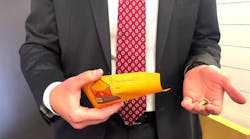Ask nearly any law enforcement officer, and I’m willing to bet that he or she will tell you that one of the key challenges facing their community is gun violence. Whether connected to gang violence, domestic violence, drug trafficking, homicide or other criminal activity, gun crime is a real problem. The statistics reinforce the story: the Gun Violence Archive documented 262,618 gun violence incidents in the U.S. from 2014-2018. As of this writing, there have been more than 5,000 gun violence deaths in just 2020 alone.
Law enforcement agencies and their dedicated officers, analysts, investigators and command staff are doing their best to curb gun violence and keep communities safe, but they are challenged in their investigations because they lack the ability to visualize connected crime gun incidents across jurisdictional boundaries.
Crime gun investigations today
The detectives investigating the crime gun incidents today face a number of obstacles:
- Criminals do not care about jurisdictional boundaries. The following scenario plays out every day: The criminal who commits a homicide—or multiple homicides—with a crime gun in City A, goes next door and fires off shots while robbing a liquor store in City B. Then, that same criminal shoots up a stop sign for fun in neighboring City C. The criminal isn’t going to stop committing crimes just because he/she enters the next jurisdiction.
- Law enforcement agencies are siloed. While the criminal in the scenario above continues on his/her crime spree through multiple communities, law enforcement’s authority to investigate those crimes is governed and limited by the originating jurisdiction. Detectives in City A don’t know about the events in City B or City C—much less share data and evidence in those cases—unless the detectives talk to each other and/or have a Memorandum of Understanding in place to formally share information. If they do share information, they likely don’t have a way to visualize it. Imagine the ability to see forensically connected events (e.g., same crime gun, multiple shooting events) across jurisdictional boundaries, in one place and on a single map, where it can be visualized and shared amongst the agencies of interest to help further the investigation regardless of the originating agency.
- Crime data is siloed. The evidence collected at the crime scene—ballistics data; forensic data; witness statements; descriptions and images of people, places and things; license plate numbers; video footage; etc.—is all maintained in individual agency data silos. Even in the best case scenario where multiple jurisdictions share information in an effort to create a regional crime gun intelligence center, the centers are staffed by individuals from Cities A, B and C, as well as federal law enforcement partners and civilian analysts. Most or all of those crime gun intelligence center team members are using different systems, platforms and applications to collect and manage their data.
Crime gun evidence is often siloed and examined within the confines of a single case. Occasionally investigators can connect related cases within a jurisdiction, but it is very hard to connect cases being worked on by different departments in separate jurisdictions. Instead, investigators are literally using spreadsheets to chronicle events, thumb drives to carry the information about crime gun incidents with them and printing off massive amounts of paper from multiple systems to try and connect the shots. They simply lack the ability to visualize ballistic evidence, modus operandi or other information about the crime. That’s not acceptable.
What’s needed for success
We need to provide law enforcement with the technology to analyze crime gun incidents for the cross-jurisdictional events that they are. That means knocking down data and agency information silos and layering in electronic information that can tie cases together, such as:
- Laboratory Information Management System data
- Ballistic data from systems, such as eTrace, National Integrated Ballistic Information Network, BallisticSearch and other ballistic analysis databases
- Records management system data
- Computer-aided dispatch data
- Public records data
- License plate recognition data
- Any other electronic databases deemed valuable
By integrating this data and ensuring it is visualized, rendered and readable in one place, agencies will finally have the actionable information they need to accelerate investigations and successfully combat gun crime to create safer communities.
Tom Joyce is a retired member of the NYPD in the rank of Lieutenant Commander of Detectives. He commanded the NYPD Cold Case Squad upon his retirement and additionally held many other roles within the detective and organized crime bureaus. Tom now serves as Vice President of Business Development for Vigilant Solutions.



